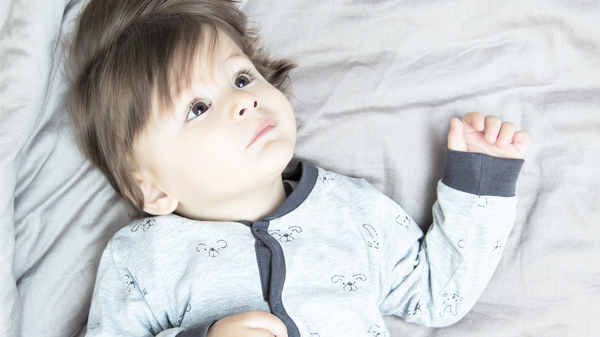Babies and Daylight Saving Time: Adjusting Your Baby’s Sleep
Setting the clocks forward one hour for Daylight Saving Time (DST) in the spring may give us brighter evenings, but “springing forward” and “falling back” can be a real setback to your baby’s sleep routine.

Not tired? DST can cause havoc with your baby’s bedtime routine.
©iStockphoto.com/GizemBDR
Oh, no! It’s that time of year again. You’re about to set the clocks an hour ahead in the spring, and you know “springing forward” will ruin your baby’s bedtime.
Even setting the clocks back one hour in the fall can disturb the evening sleep schedule and result in a very cranky baby.
Time Change Ruins the Sleep Schedule
Daylight Saving Time (DST) is the practice of setting the clocks forward one hour from standard time during the summer months, and back again in the fall, to make better use of natural daylight.
The result is lighter afternoons in spring and summer because, on the clock, the Sun sets an hour later. Unfortunately, this also shifts your baby’s bedtime by an hour, and helping your toddler sleep can prove difficult.
Even though it’s only an hour’s difference, the time change acts like a mini-jetlag that affects your baby’s circadian rhythm, making early risers even earlier or interrupting scheduled sleep times.
- Adjust gradually: Help young children adjust by putting them to bed a little bit later (fall back) or earlier (spring forward) the week before the time changes.
- Start by adjusting their bedtime and wake-up time by 15-minute increments each day a few days before DST begins. This gradual adjustment can help their bodies adapt more smoothly to the new schedule.
- Think about your child’s sleep environment. You can turn off the night-light to make the room dark in the evening.
- In the morning after the clocks change, you can open the curtains in your little one’s room and let the morning sunshine or light exposure signal to babies and toddlers that it’s time to wake up.
Upcoming DST switches in your city
4 Tips for an Easy DST Transition
Obviously, you can’t explain to a baby or toddler what Daylight Saving Time is or why it's still light outside at sleep time (or the reverse at the fall time change).
But there are some things you can do ahead of time to make the DST change easier and boost the quality of your baby’s sleep. Here are four sleep tips for your bedtime routine:
A Temporary Setback in Sleep Patterns
Some babies and toddlers are more sensitive to time changes than others. As for adults, switching to and from Daylight Saving Time messes with their circadian rhythm and might interfere with their internal body clock.
Luckily, most kids tend to settle into the time change within a week or two. So remember that switching to or from DST is usually a temporary setback to your baby’s sleep schedule.